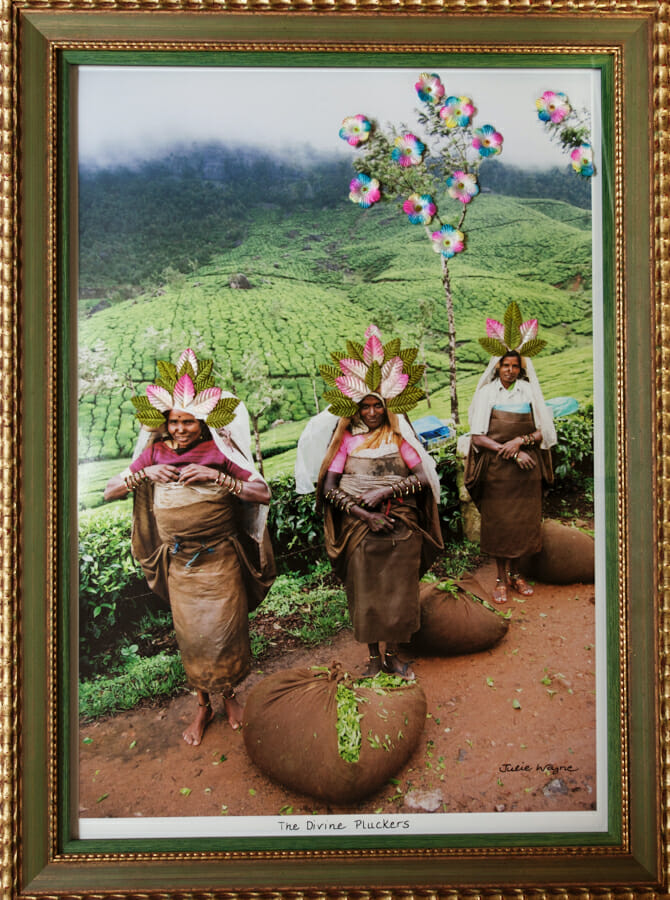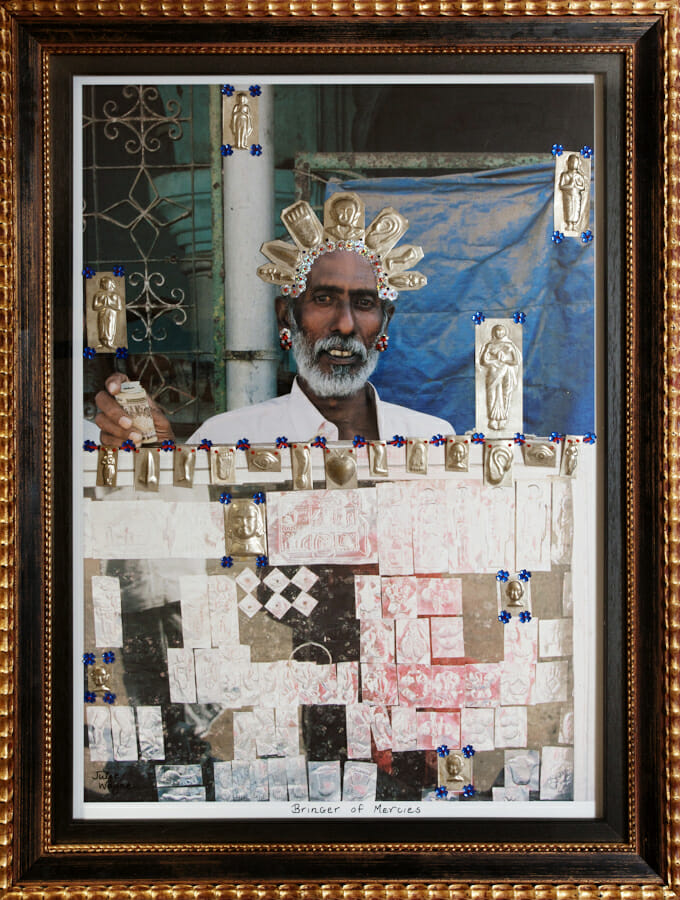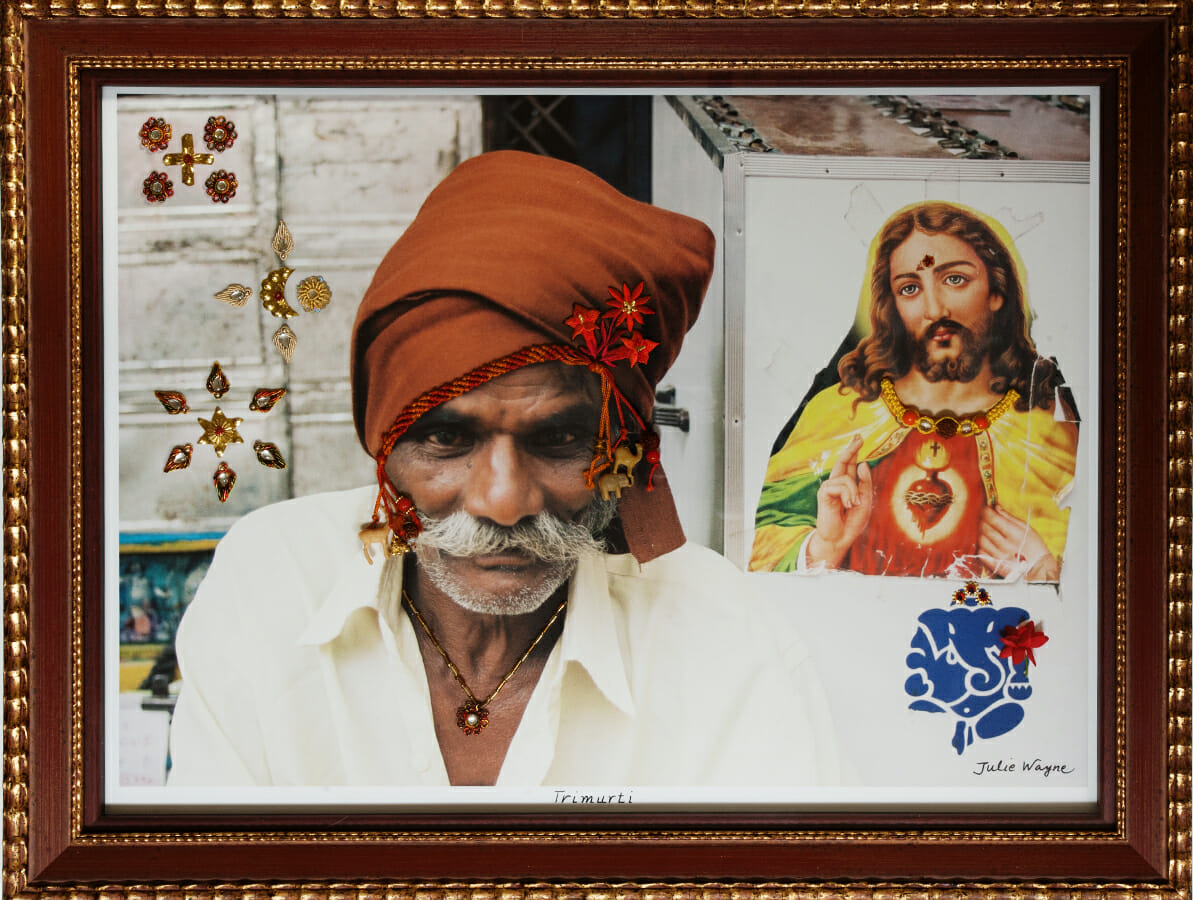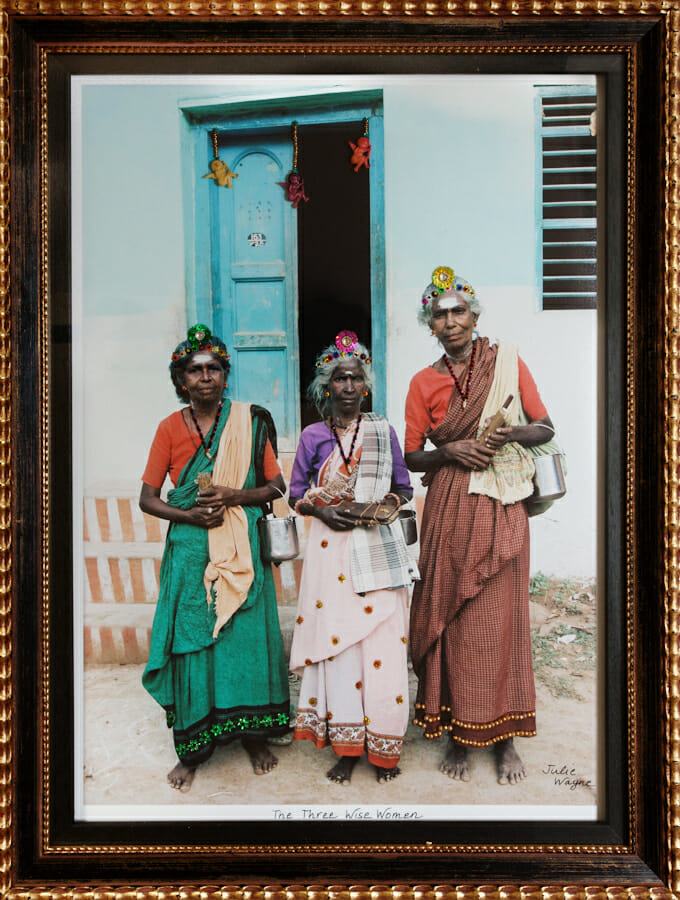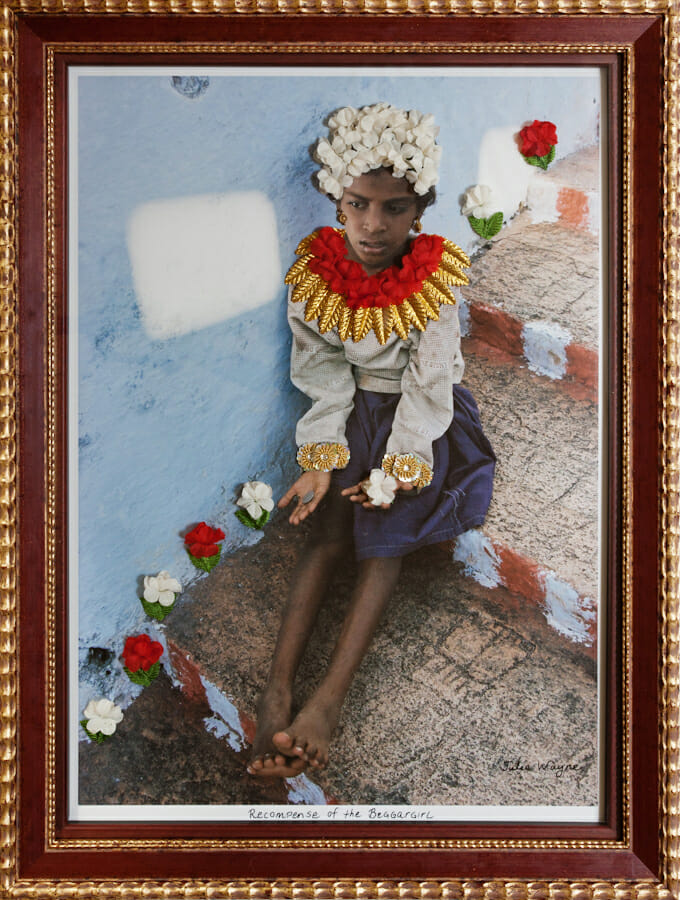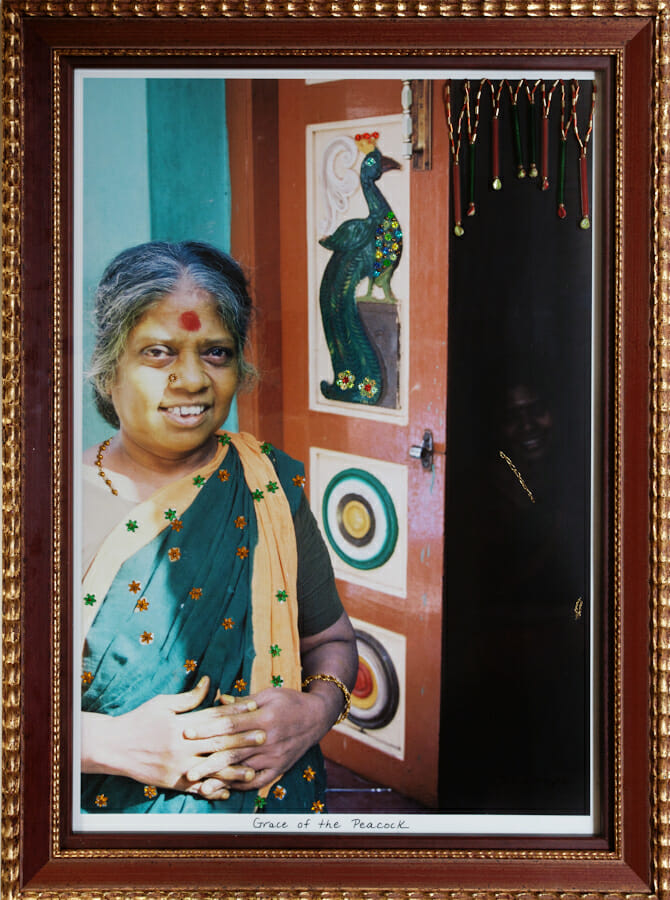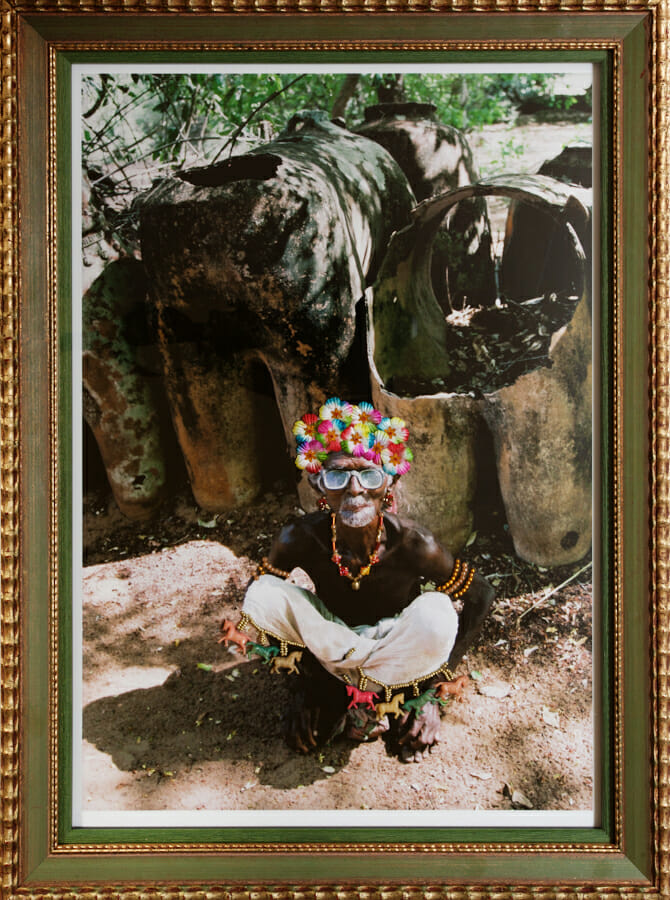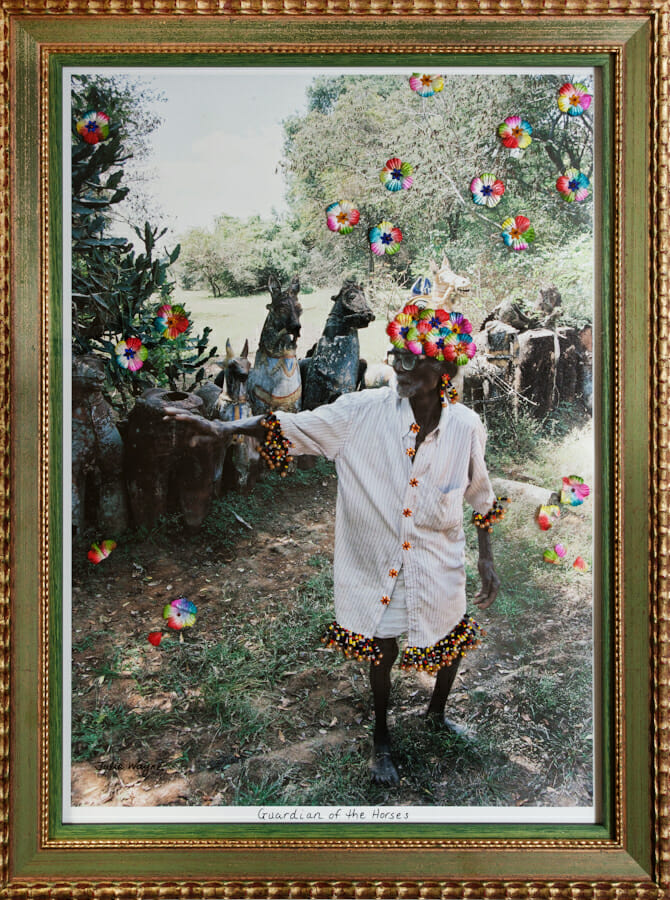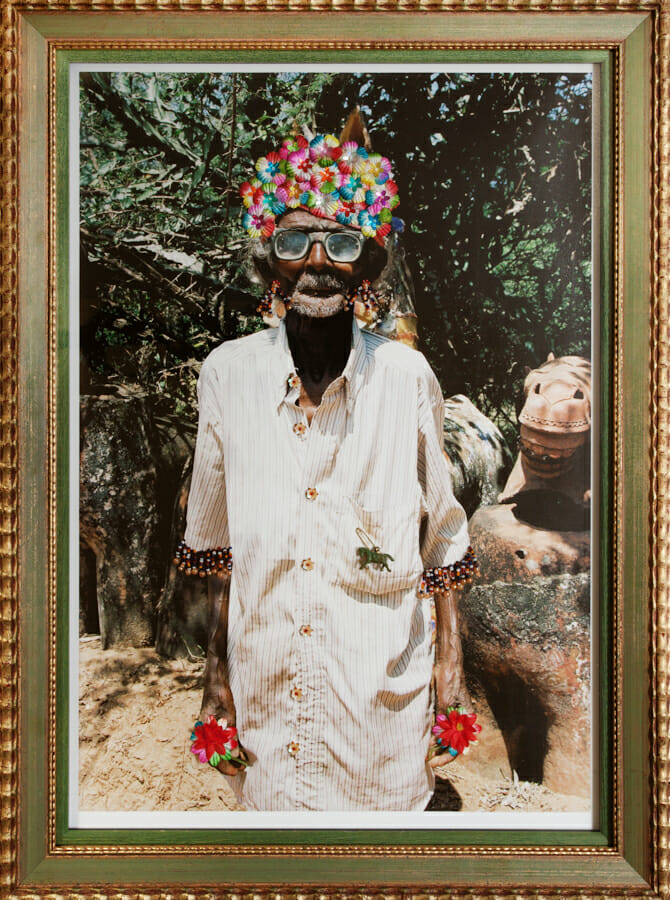This series of photos was born from a number of different genitors, the first being the tradition of embellished chromolithographies from India in the 1920’s and 1930’s. In fact, nearly every (Hindu) Indian household had one or a number of framed “chromos” gracing its walls. Virtually all of the images were scenes from Hindu mythology or portraits of various gods. Smaller images were hung upon the family altar and recognized as icons, as cult objects. The larger images were often put into ornate frames and hung in large homes and even palaces, sometimes in the family altar-room (the puja room) but more often in spacious vestibules, where they were perched in the upper corners and, leaning downwards, graced the rooms and the simple mortals below with their colours, beauty and poignancy.
In the richer households, professional embroiderers were given the task of decorating the images, of dressing them, as it were. This was likely a reference to the ritual dressing of idols in temples, where idols are laden with silk cloth, jewels and other finery as a tribute to their high station and as a way for the devotee to show his devotion.
The grand gods and mighty heroes on paper were thus dressed with shiny, colourful, glittery materials — silk, golden thread, beads and sequins — and put into ornate frames as a sign of respect, devotion and…wealth. Each embroiderer had her own style and talent and inspirations, and though a colour-code was usually respected (a red sari for the Goddess Lakshmi, for example), each embroidered chromo was unique (contrary to the unadorned chromo, which was printed by the thousands or even the tens of thousands).
I have taken my turn to dress the gods. And not only to dress them, but to create them. As is evident in the images, my gods are usually from lower classes (not to say low castes). They are humble gods. But to show my respect and devotion, I have embellished them, given them crowns and wreaths and garlands and jewellery, now and then decorating their homes and their walls and sometimes the nature surrounding them.
And true to the uniqueness of this revisited popular art, I have, in certain instances, embellished the same image differently. For like a lithography, a photo can be printed an endless number of times with little or even no variation. In this series, the ornamentation creates the originality of each and every image.
Nearly all my gods are Tamil. To honour them and their homeland (that have become my major source of inspiration), I have purchased all the embellishments — all the shiny sequins and coloured beads and golden discs and nylon flowers and dangled earrings and glitzy appliqués and sparkling decorations — in the heart of Tamil Nadu, at the tailors’ market opposite the colourful and exuberant Meenakshi temple in Madurai. Though my gods may not be wearing the “home-spun” so dear to Gandhi, their clothing can nevertheless be deemed “Made in India.”
